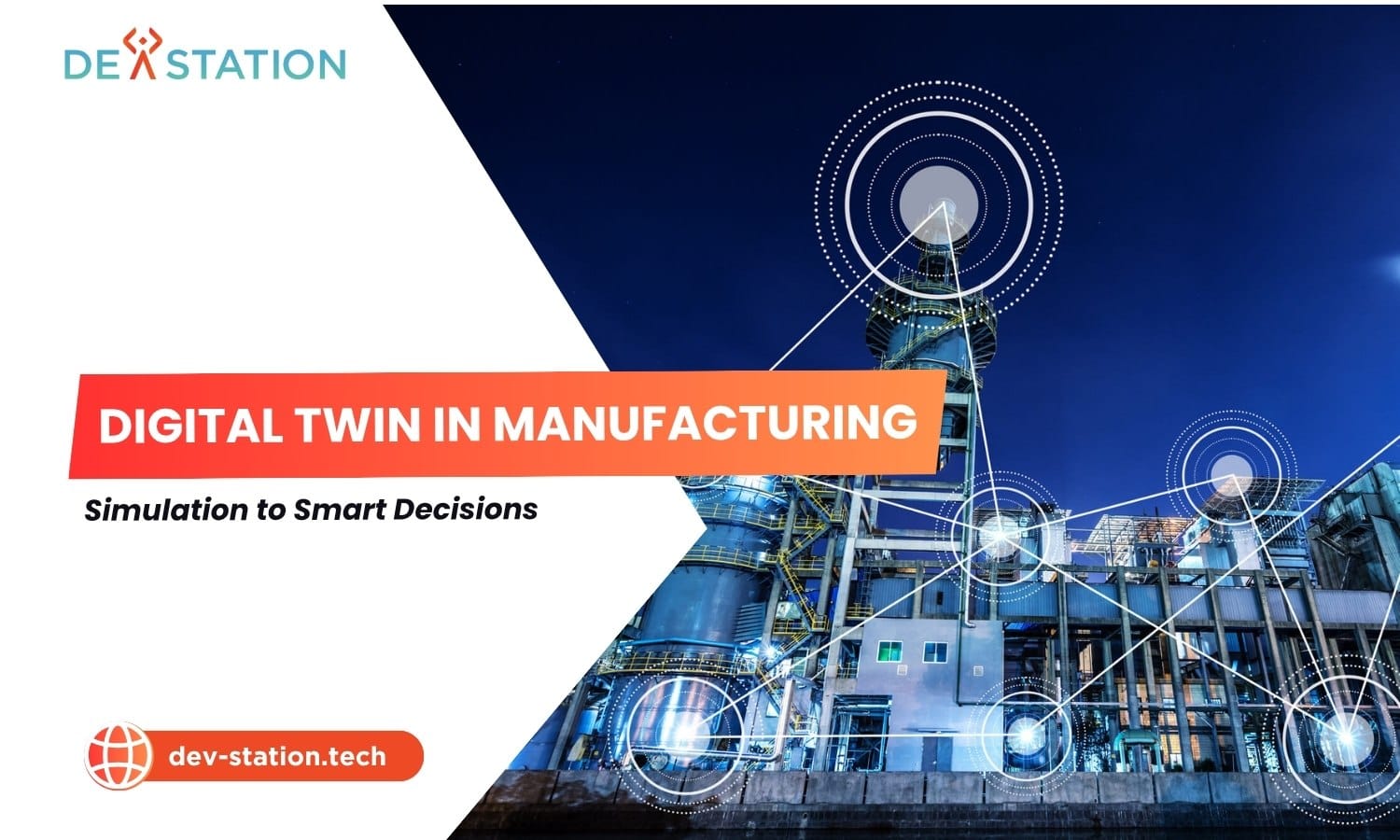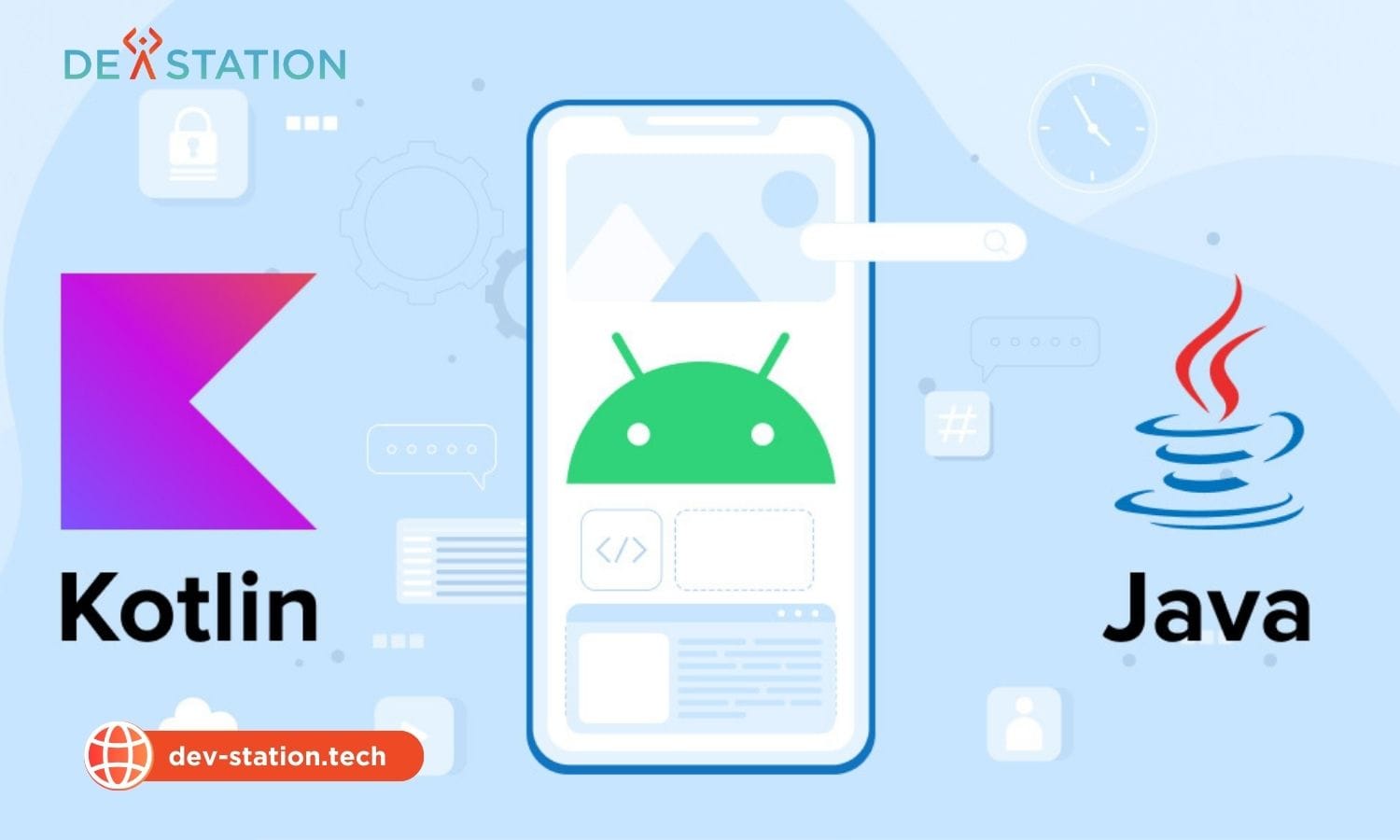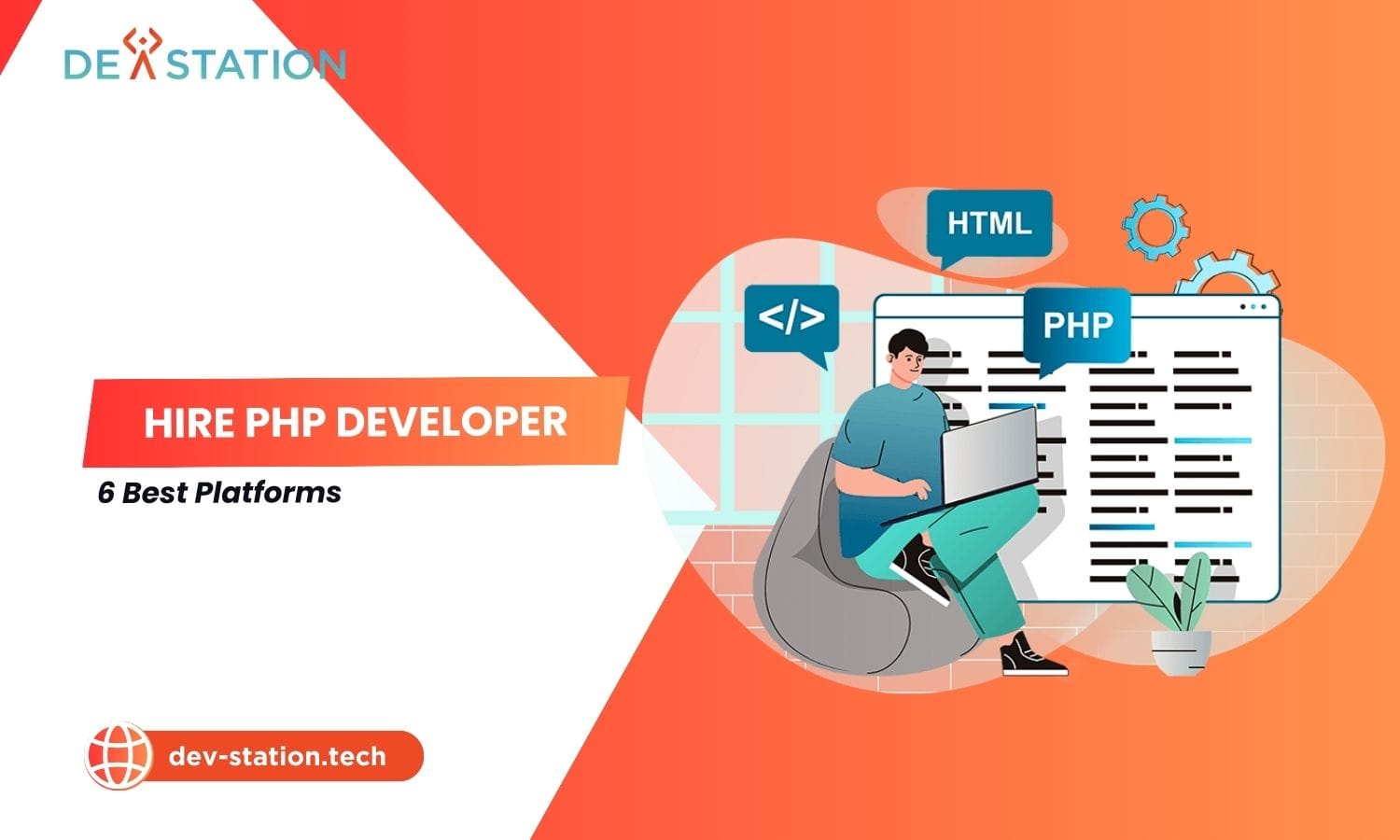Digital twin in manufacturing creates a dynamic virtual replica of your physical assets, processes, and systems, unlocking unprecedented operational insights. Dev Station Technology helps you harness this powerful simulation model to optimize performance and drive smart factory innovation, boosting both efficiency and production modeling.
Contents
ToggleWhat Are the Key Applications of a Digital Twin in Manufacturing?
The adoption of a virtual replica transforms core manufacturing functions by providing a dynamic, data-rich environment for decision-making. Instead of relying on static models or historical data alone, manufacturers can interact with a living model that reflects real-time operational reality. This shift from reactive problem-solving to proactive optimization is where the true value lies. At Dev Station Technology, we help clients build and implement these digital counterparts to address their most critical operational challenges, turning data into a strategic asset for the digital twin factory.
How Does It Validate Product Designs and Processes?
Traditionally, product development involves a lengthy cycle of designing, building a physical prototype, testing, and refining. This process is not only time-consuming but also incredibly expensive, with each physical iteration adding significant material and labor costs. A digital twin model completely transforms this paradigm.
For instance, an automotive manufacturer can use a virtual representation of a new vehicle to simulate crash tests, analyze aerodynamic performance, and test the durability of engine components under millions of cycles of virtual use. This virtual simulation process allows for thousands of design variations to be tested in a fraction of the time and cost. Companies like Boeing have famously used digital twins to design and test aircraft components, leading to major improvements in safety and performance before the first piece of metal is ever cut.
How Does It Enable Predictive Maintenance?
Preventive maintenance, which relies on fixed schedules, often results in performing maintenance too early, wasting resources, or too late, risking catastrophic failure. A digital twin offers a vastly superior approach. Consider a CNC machine on a factory floor. Sensors on the machine constantly stream data—vibration, temperature, power consumption—to its digital twin. The twin, powered by machine learning algorithms, analyzes this data against its ideal operational model.
When it detects subtle anomalies that indicate wear and tear on a specific part, it can calculate the remaining useful life of that component and automatically schedule a maintenance work order. This ensures the part is replaced right before it fails, maximizing its lifespan without risking production halts. Dev Station Technology has implemented such systems for clients, integrating sensor data to create predictive models that turn maintenance from a cost center into a strategic advantage.
How Can You Simulate Entire Operations?
What happens if you add a new robotic arm to the assembly line? How would a 10% increase in orders from a key client impact your production schedule? Answering these questions in a live factory is risky and disruptive. A digital twin of the entire factory provides a safe sandbox for this kind of what-if analysis. Unilever, for example, uses digital twins of its factories to test new production processes and packaging line configurations. By simulating the changes first, they can predict the impact on efficiency, energy consumption, and output. This allows them to make data-backed decisions and implement only the most effective improvements, ensuring a smooth transition and maximizing the return on their investment.
What Exactly Is a Digital Twin and How Is It Different From Simulation?
The concept of a virtual representation has existed for decades, but the modern digital twin is distinguished by its live connection to the physical world. This connection creates a continuous loop of data and feedback, where the physical asset sends data to the twin, and insights from the twin are used to optimize the physical asset. It’s a bridge between the physical and digital worlds, a core component of the vision for Industry 4.0. Understanding this connection is the key to unlocking its full potential.
Can You Explain the Core Concept of a Virtual Replica?
Imagine a wind turbine operating in a remote location. Its virtual replica, or digital twin, exists on a cloud server. This is not just a 3D model; it is a complex software model that understands the physics of the turbine. It knows the specifications of its gearbox, the material composition of its blades, and its expected performance based on its design. More importantly, it is constantly receiving data from sensors on the actual turbine: wind speed, blade rotation speed, temperature, and vibration. This allows the digital twin to mirror the exact condition and behavior of the physical turbine at any given moment.
What Distinguishes a Digital Twin From a Traditional Simulation?
A simple way to understand this is to compare a flight simulator with a digital twin of an actual airplane in service. A flight simulator is a powerful simulation; a pilot can use it to practice how to handle an engine failure. However, it is a generic model. A digital twin of a specific airplane, say Flight 737 with tail number N9050A, is connected to that exact plane. It knows the maintenance history, the current fuel level, and the real-time performance of its engines during flight. The simulation runs on the digital twin to predict when a specific component on that specific plane will need service, not just on a generic model. This connection to a unique physical asset is what makes the digital twin a revolutionary technology.
How Does the Internet of Things (IoT) Power a Digital Twin?
Without a constant stream of high-quality data, a digital twin would be nothing more than a static 3D model. IoT technology provides the essential bridge that allows the digital twin to see, hear, and feel what its physical counterpart is experiencing. This constant flow of information is what enables the advanced analytics and predictive capabilities that make digital twins so valuable for smart decision-making. The synergy between IoT and digital twins is foundational to the concept of the smart factory and industrial iot in manufacturing.
What Role Do IoT Sensors Play?
In a modern factory, thousands of sensors are embedded in machinery, production lines, and the facility itself. A motor might have vibration sensors to detect imbalances. A chemical tank could have pressure and temperature sensors to ensure safety. An autonomous guided vehicle (AGV) uses GPS and LiDAR sensors to navigate the factory floor. Each of these sensors captures a small piece of the factory’s overall operational picture. The power of iot in manufacturing lies in aggregating the data from all these disparate sensors into a single, cohesive model: the digital twin.
How Is Real-Time Data Integrated?
The journey of data from a sensor to the twin involves several key steps. First, the sensor captures a reading. This data is then transmitted, often wirelessly, to a local gateway. The gateway aggregates data from multiple sensors and forwards it to a central cloud platform.
On this platform, data processing pipelines clean and structure the incoming data, converting raw sensor readings into a format the digital twin can understand. Finally, the twin’s software model is updated with this new data point. This continuous, low-latency data flow ensures that the digital twin is always an accurate reflection of the physical asset’s current state.
What Tools and Technologies Are Needed to Build a Digital Twin?
Creating a functional digital twin is not a simple task; it involves the integration of multiple complex technologies. These technologies work together to create, populate, and operate the virtual model. The choice of specific tools often depends on the complexity of the asset being twinned and the specific business goals of the project. Dev Station Technology specializes in integrating these disparate systems to create a seamless and powerful digital twin solution.
How Do CAD and PLM Systems Integrate?
The CAD model is the skeleton of the digital twin. The PLM data provides the muscles and nerves. For example, the CAD model of a water pump defines its shape and size. The PLM system adds the information that its impeller is made of stainless steel 316, it was manufactured on a specific date, and its last service was six months ago. This integration of design and lifecycle data creates a rich, context-aware foundation upon which the real-time IoT data can be layered.
What Is the Role of Simulation and Analytics Software?
These software layers are the brain of the digital twin. The simulation engine can answer questions like, What would happen to this engine part if the operating temperature increased by 15%? The analytics engine, on the other hand, analyzes the incoming real-time data to answer questions like, Based on the current vibration patterns, what is the probability that this engine part will fail in the next 100 hours? The combination of these two capabilities allows manufacturers to both understand the present and accurately predict the future.
Why Is Cloud and Edge Infrastructure Important?
A digital twin of a single jet engine can generate terabytes of data on a single flight. Storing and processing this volume of data requires the immense, on-demand resources of a cloud platform like AWS or Azure. However, not all data needs to go to the cloud.
For very fast control decisions, like shutting down a machine to prevent damage, the decision must be made in milliseconds. This is where edge computing comes in. A local edge gateway can run a simplified version of the digital twin model to make these instant decisions, only sending summary data to the cloud for long-term analysis.
What Is the Real Return on Investment (ROI) of a Digital Twin?
Investing in digital twin technology requires a significant upfront commitment of time and resources, but the long-term benefits are substantial. The ROI is not just about cost savings; it’s about building a more resilient, agile, and competitive manufacturing operation. By enabling data-driven decisions at every stage of the product and production lifecycle, a digital twin becomes a powerful engine for continuous improvement and innovation, especially when it provides clear iot supply chain visibility manufacturing insights.
How Does It Quantifiably Reduce Costs?
Let’s calculate a simplified ROI for a predictive maintenance use case. Assume a factory has a critical machine where one hour of unplanned downtime costs $20,000. This machine fails unexpectedly about 10 times a year, resulting in 20 hours of downtime, or a total loss of $400,000 annually. Implementing a digital twin solution costs $250,000. By predicting 70% of those failures, the digital twin eliminates 7 failures, or 14 hours of downtime. The cost savings in the first year alone would be 14 hours * $20,000/hour = $280,000. In this scenario, the initial investment is paid back within the first year, delivering a clear and immediate positive ROI.
| Area of Impact | Metric | Potential Improvement |
|---|---|---|
| Product Development | Time-to-Market | 25-50% Reduction |
| Manufacturing Operations | Overall Equipment Effectiveness (OEE) | 10-15% Increase |
| Maintenance | Unplanned Downtime | Up to 70% Reduction |
| Quality Control | Defect Rate | 10-20% Reduction |
How Do Real-World Case Studies Demonstrate Success?
One of the most powerful examples is from the German manufacturing giant Siemens. At their electronics manufacturing plant in Amberg, Germany, they have created a comprehensive digital twin of the entire facility. This virtual factory is used to simulate and optimize every aspect of production. The result? The plant now operates at a 99.99885% quality rate, meaning defects are incredibly rare. This level of precision and efficiency would be impossible to achieve without the deep insights and optimization capabilities provided by their digital twin.
The journey from simulation to smart decision-making is a transformative one, and the digital twin is the vehicle that makes it possible. By creating a living, breathing virtual replica of your manufacturing operations, you can unlock a new level of intelligence and control. At Dev Station Technology, we are ready to help you navigate this journey. To learn more about how a digital twin can revolutionize your business, explore our insights at dev-station.tech or contact our team of experts directly at sale@dev-station.tech.





